Have you ever wondered what happens inside the wind tunnel where aircraft are tested? Today, we’re going to take you behind the scenes of the wind tunnel, talk about what happens there, and talk about some of the most interesting aircraft being tested in such facilities today. Let’s get started! First off, it’s worth mentioning that wind tunnels have been around since 1871 when French physicist Gustave Eiffel first built one in his labs.
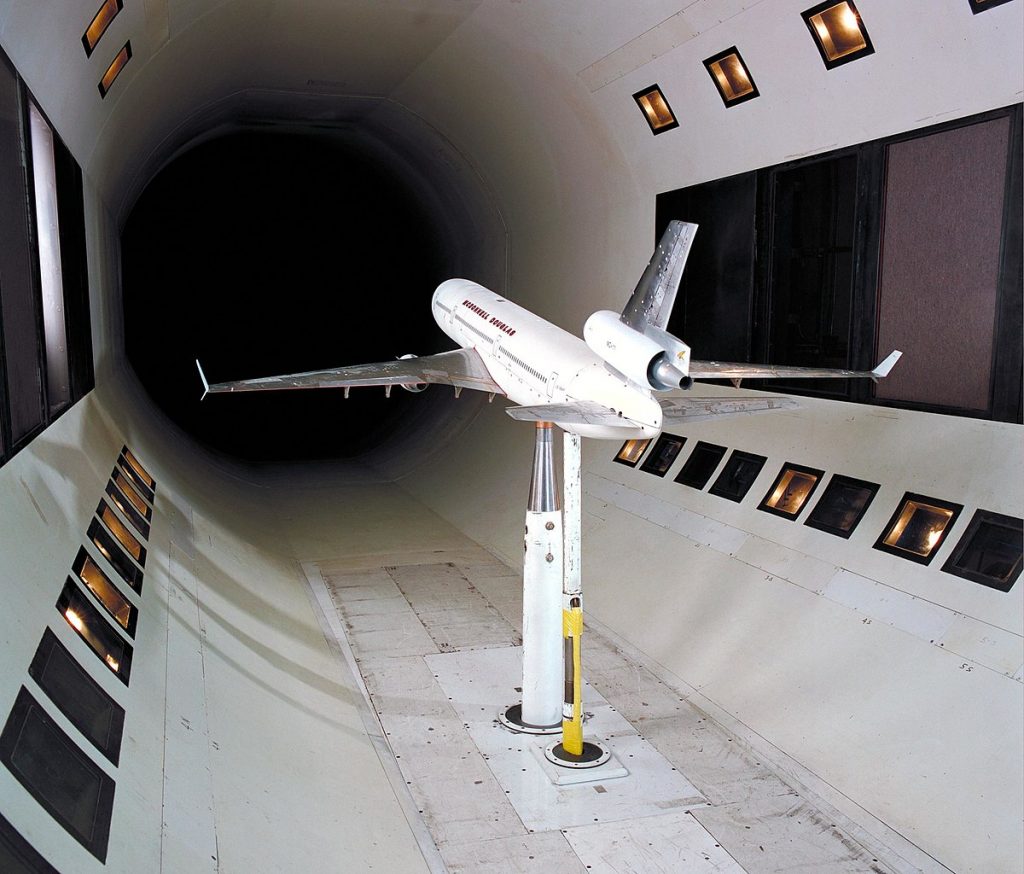
A Brief History of Wind Tunnels
Wind tunnels were invented by a French engineer, Benjamin Boullee in 1699. His initial intention was to solve problems with designing large buildings such as cathedrals. However, these early wind tunnels were crude and could not replicate the forces of nature. Frank H. Wenham (1824-1908), a Council Member of the Aeronautical Society of Great Britain, is generally credited with designing and operating the first wind tunnel in 1871. The tunnel was built by John Browning, an optician, and located at Penn’s Marine Engineering Works at Greenwich, England. The tunnel was 3.7 meters (12 feet) long and 45.7 centimeters (18 inches) square. Even if the first wind tunnel in Great Britain was operated by a compressed air ejector the following wind tunnels used the air moved by a fan disposed upstream of the wind tunnel’s test section. The change to suction is an important step in wind tunnel development. When the fan is disposed downstream of the test section and it no longer interferes with the model, which guarantees the quality of flow.
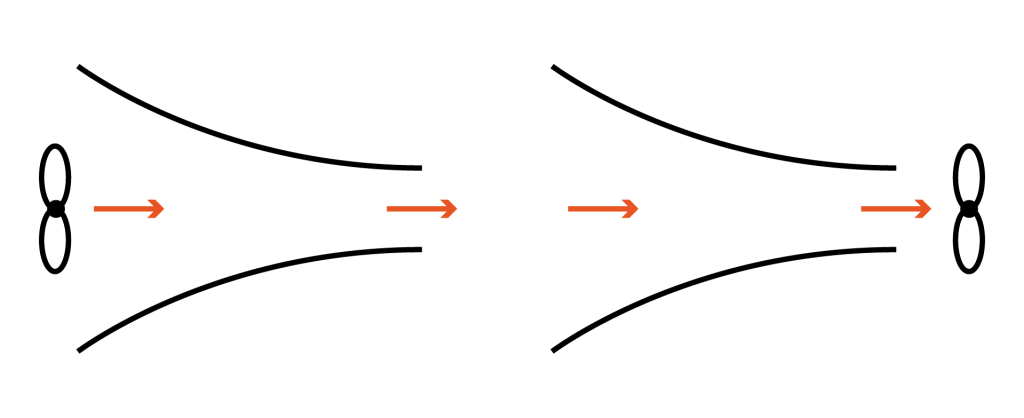
In 1871 the first patent for an improved wind tunnel was filed and by 1900 there were many innovations that increased the accuracy of testing results and data collection methods, but it was not until 1930 when a British scientist, Alan Osborne published his groundbreaking paper “The instability of air in rectangular channels” that researchers had enough data to create what we now call modern day wind tunnels.
Today, wind tunnels come in all shapes and sizes depending on their use. They can be small like those used for unmanned aerial vehicles or larger for airplanes or helicopters. They can also be open circuit (with an open front) or closed circuit (having a closed front). Wind tunnel tests ensure the safety of aircrafts through research and analysis before they are put into production.
Aerodynamic Force Terminology
When evaluating airplane performance, wind tunnel tests help to calculate how efficient the aircraft is in generating lift and minimizing drag. When a force on an object results in a change of its velocity, that force is known as an aerodynamic force. An object experiencing aerodynamics will also experience a change in its pressure with altitude.
There are four forces to consider when evaluating airplanes during wind tunnel testing. The first three aerodynamic forces to consider when conducting wind tunnel tests are lift, drag, and thrust; these forces work together to determine if an aircraft will fly successfully.
Wind Tunnel Structure – How Does It Work?
Three main criteria that are commonly used to define wind tunnels are maximum achievable speed, flow uniformity, and turbulence level. Therefore, the design aim of a wind tunnel, in general, is to get a controlled flow in the test chamber, achieving the necessary flow performance and quality parameters.
There are five basic parts of the wind tunnel: The Settling Chamber, the Contraction Cone, the Test Section, the Diffuser, and the Drive Section. During a test, the test object is placed in the test section of the tunnel, and the air is made to flow past it. Various types of instrumentation are used to determine the forces on the model.

In some wind tunnel tests, the aerodynamic forces and moments on the model are measured directly. The model is mounted in the tunnel on a special machine called a force balance. The output from the balance is a signal that is related to the forces and moments on the model. Balances can be used to measure both the lift and drag forces.
The balance must be calibrated against a known value of the force before, and sometimes during, the test. Force measurements usually require some data reduction or post-test processing to account for Reynolds number or Mach number effects on the model during testing.
Four air properties affect the way it flows by an object: viscosity, density, compressibility, and temperature. With the model mounted on a force balance, lift, drag, lateral forces, yaw, roll, and pitching moments over a range of angles of attack can be measured.
Different Types of Wind Tunnels
Wind tunnels range in size and complexity depending on what they’re being used for. For example, a simple wind tunnel might look like a tunnel with one closed end and a fan mounted on one side. More advanced wind tunnels may use exhaust blowers to create more turbulence and can be so complex that they include working cabins within the tunnel. The air inside a wind tunnel is pulled through by some type of fan, typically mounted at one end of the tunnel, which is called an intake. At the other end of the tunnel there is either an observation window or a test section where measurements are taken. Many modern tunnels have observation windows throughout their length so that measurements can be taken from different positions within the tunnel.
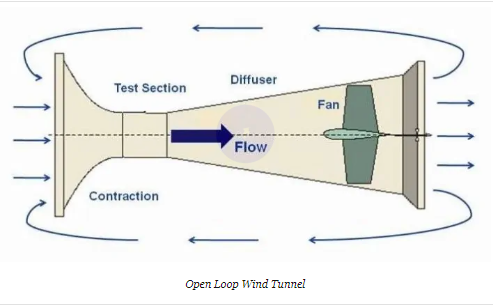
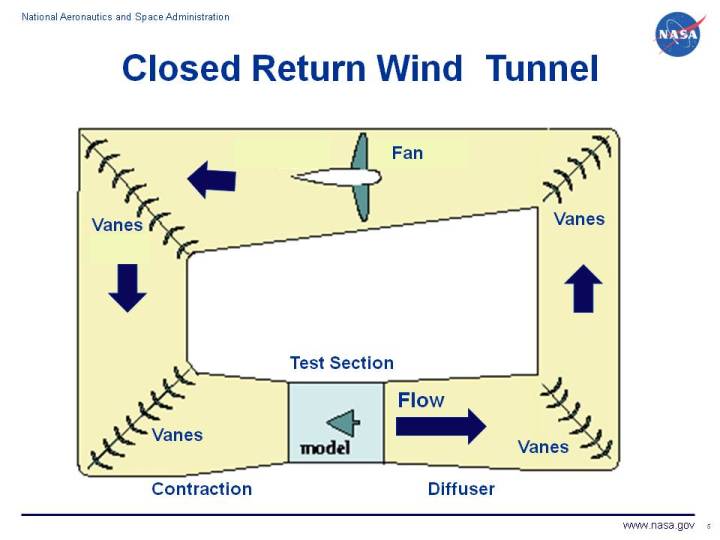
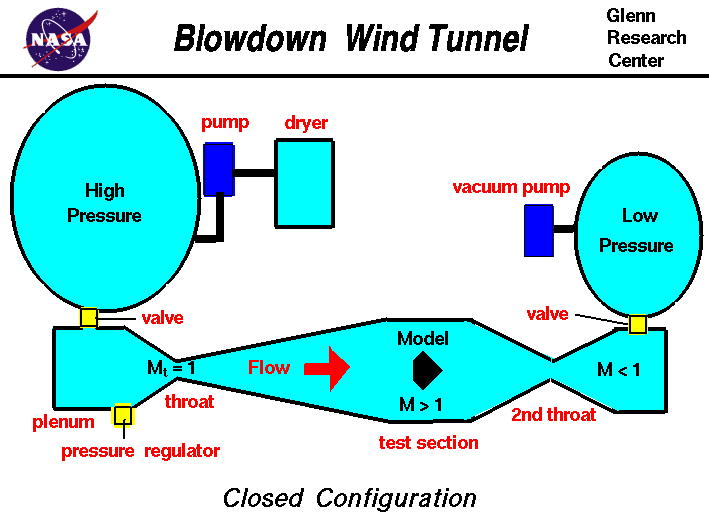
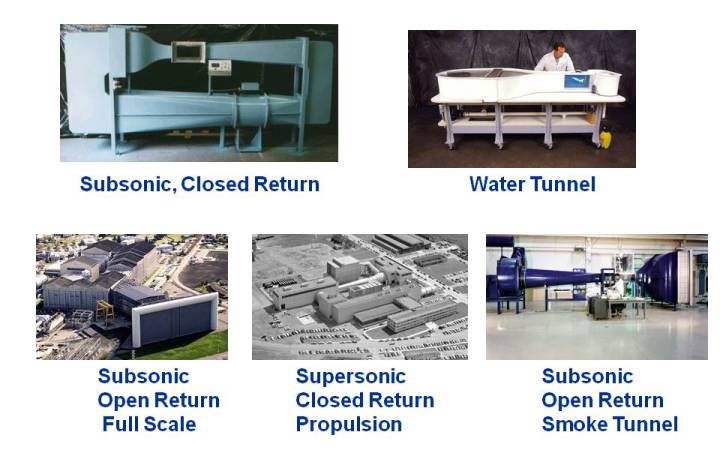
Wind Tunnel Classification
Wind tunnels are generally classified by the amount of speed they can produce as either low-speed (Low-Speed Wind Tunnels (LSWT)) or high-speed. They are further classified as:
- Subsonic wind tunnels (80 percent of the speed of sound) – these are furtherly split into “Incompressible subsonic” (between Mach 0 and about 0.3) and “Compressible subsonic” (between about Mach 0.3 and about 0.8).
- Transonic wind tunnels – between Mach 0.8 and 1.2 – about the speed of sound.
- Supersonic wind tunnels – between Mach 1 and 4 – up to 6 times the speed of sound.
- Hypersonic wind tunnels – Mach is greater than 4 – 5 – up to 12 times the speed of sound.
- Hypervelocity wind tunnels – more than 12 times the speed of sound.
Specialized Wind Tunnels:
- High enthalpy wind tunnels are designed to study the flow of air around objects moving at speeds much faster than the local speed of sound (hypersonic speeds). “Enthalpy” is the total energy of a gas stream, composed of internal energy due to temperature, the product of pressure and volume, and the velocity of flow.
- Atmospheric entry wind tunnels or plasma wind tunnels use plasma to simulate aerodynamic heating and a high Mach number state at reentering into the atmosphere. It reproduces re-entry conditions by heating gas to several thousand degrees Celsius, at air flows seven times the speed of sound and with stagnation pressures as high as 50 atmospheres. Varying Reynold numbers indicate the steady or turbulent fluid flow past the object or in the tunnel.
- Climatic wind tunnels have the capability of recreating climatic conditions such as solar radiation, temperature, and humidity, e.g., rainfall, snowfall, and icing. It is used for testing things such as wind turbines, bridge cables, or fans in heating, ventilation, and air conditioning (HVAC).
- Shock tubes or blow-down wind tunnels produce airflow by rapid discharge of a high-pressure storage tank or by suction from an evacuated reservoir. They can replicate and direct blast waves simulating actual explosions and their effects. Shock tubes are used to investigate compressible flow phenomena and gas-phase combustion reactions.
Wind Tunnel Applications
Wind tunnels simulate airflow over an aircraft and measure performance, efficiency, and stability. The process is used to test designs and understand aerodynamics to identify optimal performance on-air as well as in ground tests.
Aircraft Testing – Low-speed and High-speed

- Low-speed aircraft wind tunnel testing to measure the aerodynamic characteristics of aircraft – lift and drag properties, as well as stability of aircraft and engine components. These wind tunnel tests are used for static stability testing and pressure measurement.
- The aerodynamic characteristics of aircraft at speeds of takeoff and landing etc.
- Shock waves for high-speed aircraft are visualized using water as working fluid.
- Understanding the aeroacoustics by exploring aerodynamic noise, i.e., turbulent fluid motion and acoustic pressure fluctuations, i.e., external noise generation via aerodynamic forces interacting with surfaces.
- Water spray systems are applied for icing testing.
Spacecraft Testing – High-speed (Supersonic, Hypersonic, Hypervelocity)

- Atmospheric entry wind tunnels or plasma wind tunnels to characterize the aerodynamic behavior and heating of materials and structures by entry simulation on space vehicles such as rockets, satellites, launch vehicles, spacecraft.
- Simulation of the desired burn-up during atmospheric reentry to estimate the risk of debris reaching ground.
- High-enthalpy wind tunnels for heating testing of thermal protection systems for re-entry vehicles.
Data Acquisition and Sensors
Engineers use a number of instruments while testing an airplane in a wind tunnel including pressure sensors and airspeed probes that give feedback on speeds, engine power settings, etc.
Wind tunnels are used by engineers to test forces against wind pressure. Making precise measurements of pressures and forces on the test model allows the engineer to predict them on the full-scale aircraft and improve its aerodynamic performance.
In order to perform these measurements, engineers must use sensors and signal conditioning equipment in order to store and analyze the data. In other words, modern data acquisition systems are needed.
For wind tunnel testing engineers usually use dynamic sensors such as:
- Pressure sensors
- Microphones
- Force sensors
- Strain gauges
Wind tunnel sensors are organized by speed classification. From subsonic use of condenser microphones for acoustic holography to shock sensors for studying boundary layer transition of hypersonic re-entry vehicles. Sensors are usually installed inside the wind tunnels or close to the model itself.
Signal Conditioning
Signal conditioning is an electronic circuit that manipulates a signal in a way that prepares it for the next stage of processing. Many applications involve environmental or mechanical measurement from sensors, such as temperature and vibration. These sensors require signal conditioning before a data acquisition device can effectively and accurately measure the signal.
Once the signal is correctly conditioned it is ready to be stored by the data acquisition system and prepared for analysis using signal processing software.
